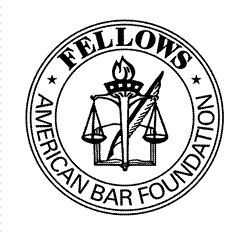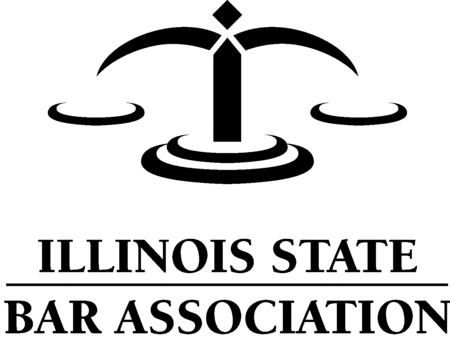Childhood Sexual Abuse Statute of Limitations
By: Timothy Freiberg
What is the Statute of Limitations for civil suits in Illinois?
A statute of limitations is a procedural device that sets forth a period of time in which a plaintiff must file a cause of action. In Illinois, a statute of limitations is procedural in nature. Fredman Bros. Furniture Co. Inc. Dept. of Revenue, 109 Ill. 2d. 202 (1985); see also, Orlicki v. McCarthy, 4 Ill.2d 342 (1954). A statute of limitation is not designed to alter substantive rights. Wilson v. Bishop, 82 Ill.2d 364 (1980).
In Illinois, prior to adoption of the “discovery rule,” all statutes of limitation were for a fixed time. In personal injury cases the fixed time was 2 years. The first change in the 2-year period was the adoption of a statute that tolls the running of the two-year period during minority. Even though tolled, the fixed period was still 2 years after reaching majority. Therefore, Illinois adopted at common law another tolling device, the “discovery rule.” See Rozny v. Mornul, 43 Ill.2d 54 (1969). Pursuant to the discovery rule, the statute of limitations is tolled until a person knows or should know of his injury and that it is wrongfully caused. Thus, the 2-year period does not automatically expire upon 2 years, but begins to run at some later time. The discovery rule was extended to many types of cases, including cases involving childhood sexual abuse.
What is the statute of limitations for childhood sexual abuse claims?
The controlling statute of limitations governing childhood sexual abuse is 735 ILCS 5/13-202.2. However, it is important to understand the history of this very important and unique statute of limitations.
In 1991, the Legislature enacted the “Childhood Sexual Abuse Act”, 735 ILCS 5/13-202.2, which (among other things) included a discovery provision specific to this unique type of case. As enacted, the statute provided a tolling device of minority in subsection (d) by providing that the limitations period does not begin to run until the person abused attains the age of 18, and it adopted the tolling device of the discovery rule in subsection (b) by providing that an action for childhood sexual abuse need not be commenced until 2 years after the date that the person abused:
[D]iscovers or through the use of reasonable diligence should discover that the act of childhood sexual abuse occurred and that the injury was caused by the childhood sexual abuse… 735 ILCS 5/13-202.2(b) (Subsequently Amended).
Under the 1991 version of the Act there was a dual requirement of knowledge of the abuse and knowledge of the causal relationship which triggered the start of the 2-year period. It is obvious that the legislature clearly contemplated that the dual requirements of the discovery period might not occur until well beyond the age of majority and perhaps not until the victim was 30, 40 or 50 years old. A statute of repose was also included in the 1991 version. It provided that:
In no event may an action for personal injury based on childhood sexual abuse be commenced more than 12 years after the date on which the person abused attains the age of 18.
In 1994, the legislature amended the statute to delete the statue of repose period. In all other respects it remained exactly the same. Hence, by its action, the legislature recognized that the 2-year period might not begin to run until a person was 40 or 50 years old, and expressly approved of the possibility of the discovery period not beginning to run until past the age of 30. The limitations period, once it began to run, was 2 years under both versions—1991 and 1994.
In July 2003, the procedural aspects of section 13-202.2 were again amended.
The latest amendment extended the limitations and tolling periods and clarified the legislature’s intent with respect to the discovery rule. The current version reads as follows:
Notwithstanding any other provision of law, an action for damages for personal injury based on childhood sexual abuse must be commenced within 10 years of the date of the limitation period begins to run under subsection (d) or within 5 years of the date the person abused discovers or through the use of reasonable diligence should discover both (i) that the act of childhood sexual abuse occurred and (ii) that the injury was caused by the childhood sexual abuse. The fact that the person abused discovers or through the use of reasonable diligence should discover that the act of childhood sexual abuse occurred is not, by itself, sufficient to start the discovery period under this subsection (b). Knowledge of the abuse does not constitute discovery of the injury or the causal relationship between any later-discovered injury and the abuse. (Emphasis added).
(d) The limitation periods under subsection (b) do not begin to run before the person abused attains the age of 18 years; … 735 ILCS 5/13-202.2
Thus the procedural approach to the statute of limitations in childhood sexual abuse cases was clarified. The 2003 amendment contains new language and does several things:
- It enlarges the fixed period of time from 2 years to 10 years;
- It enlarges the discovery rule time from 2 years to 5 years;
- It adopts the tolling device of minority and the tolling device of the discovery rule;
- It describes a procedure that is to be used in making a determination as to when the 5-year discovery begins to run, i.e., determining when a person discovers both the fact of abuse occurring and the causal relationship between the abuse and the injury.
This latter point and the new language in the amendment was obviously inserted to change the result of such cases as Parks v. Kownacki, 193 Ill.2d 164 (2000) and Clay v. Kuhl, 189 Ill.2d 603 (2000), wherein the Supreme Court seemed to equate knowledge of the abuse with knowledge of the causal relationship. In light of current psychological and psychiatric literature and knowledge, this new language makes eminent sense.
In both the 1994 version of the child sexual abuse statute of limitations and the 2003 version, two factual scenarios are possible: The person abused might discover both the fact of abuse and the causal relationship of the abuse to the injury before reaching age 18 or after reaching age 18. Under the 1994 version, the limitations period was 2 years after discovery of both factors, which could occur before age 18. However, under subsection (d), the 2-year period was tolled until age 18.
The amended statute (2003 version) differs in that the person abused might discover both the fact of abuse and the causal relationship to the injury before age 18, but the limitation period was enlarged to 10 years and the 10-year period was tolled in subsection (d) until age 18. In both statutes if the discovery of both the fact of abuse and the causal relationship occurred after age 18, the limitations period is tolled until age 28 or until the discovery occurs, whichever is later. In the 1994 version, the period of limitations after discovery was 2 years, while the 2003 version provides 5 years for filing after discovery. A hypothetical scenario follows analyzed under both the 1994 and 2003 versions of the statute.
HYPOTHETICAL
Person is sexually abused at the age of 14. At that time, he/she seeks medical treatment for the physical injury occasioned by the event. He/she does not treat with any psychiatric provider or mental health counselor. Subsequently, he/she experiences difficulty with trust in relationships, anger management issues, sexual dysfunction and fear of closed spaces, but never seeks treatment or professional help. Person is married on his/her thirty-fifth birthday. On the wedding night, his/her sexual dysfunction becomes a contentious issue. At that time, he/she discloses to his new spouse (for the first time since the act of physical sexual abuse twenty-one years earlier) that he/she was sexually abused. A long conversation then takes place, concluding with the newlyweds’ conclusion that the event of childhood sexual abuse is/ was a possible cause of his/her sexual dysfunction. After the wedding, he/she seeks professional help for the issues he/she has experienced for the past twenty-one years.
Under the 1994 version of the statute, the hypothetical plaintiff would have two years from the date of his/her thirty-fifth birthday in which to file suit. You see, both statutory triggers took place at that time: (1) Plaintiff had knowledge of the act of abuse actually taking place; and (2) Plaintiff had reason to know that the physical act was a cause of his psychological sequelae he/she had experienced for the past twenty-one years. He/she has until his/her thirty-seventh birthday to file a civil action for damages against his/her abuser.
Under the 2003 version of the statute, for the same enumerated reasons, the hypothetical plaintiff would have five years from the thirty-fifth birthday detailed in which to file suit.
Application of either statutory form illustrates the purpose and intent behind the inclusion of the discovery rule in the statutory text: to afford protection for the rights of victims, who through no fault of their own, do not or cannot appreciate the injurious consequences of the physical sexual abuse that befell them as a child.
The 2003 version of the statute is clear that in all cases, the limitations period is 10 years from the date you turn 18 (28 years old). The five-year period is a discovery period, which acts only to extend the limitation period, not contract it. Claimants that discover the abuse and injury after age 28 have 5 years from the date of discovery (i.e., beyond age 28). Accordingly, a claimant that discovers the abuse and resulting injury when he is 25 has until 30 to file suit, and a claimant that discovers the abuse and resulting injury when he is 40 has until 45 to file suit.
FREE and discrete CONSULTATION
The Law Offices of Frederick Nessler & Associates, Ltd. has played an important role in developing the law governing the childhood sexual abuse statute of limitations in Illinois. Frederick W. Nessler helped draft the current statute of limitations in Illinois. Timothy J. Freiberg has taken several important cases to the Illinois Appellate Court to clearly define the meaning and application of the statute. The sexual abuse attorneys at Nessler & Associates have helped hundreds of victims of sexual abuse in Illinois and throughout the United States. We are experienced and dedicated to helping victims of sexual abuse find justice.
If you or a loved one has been sexually abused, contact one of the injury lawyers at Nessler & Associates. We have helped people injured by sexual abuse in Illinois recover millions in compensation. Our team of personal injury lawyers will help you obtain the compensation you need, and will provide the representation you deserve.
We have offices located throughout Illinois. Our office locations include Springfield, Lincoln, Decatur, Champaign, and Chicago.
We don't get paid unless your case is settled or won. Call our team of aggressive personal injury lawyers today at (217)698-0202 or click the button below to inquire about an whether you have a viable sexual abuse claim. Our Springfield Office is located at 536 N. Bruns Lane, Suite 1, Springfield, Illinois 62702.










